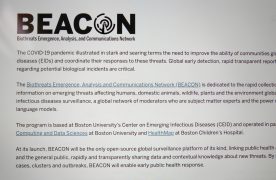When walking down America’s streets, no one individual is representative of that city. Stereotypes are still rampant and one could spitball, perhaps, but it is impossible to point to a single individual group as being representative of a cultural center. America’s divergence from the expected should be embraced rather than diminished in every realm, but perhaps especially in the work force.
A study conducted by Stanford and Harvard researchers, Raj Chetty and Nathaniel Hendren respectively, instead determined that this divergence represents a fading “American Dream,” as explained in a Washington Post article. The study found that a decline in earnings, in comparison to parental income, contributed to this darkening if you will.
“Children’s prospects of achieving the “American Dream” of earning more than their parents have fallen from 90% to 50% over the past half century,” the project’s site states. “This decline has occurred throughout the parental income distribution, for children from both low and high income families.”
In the Post article, Stanford education professor Sean Reardon viewed the study and its framing positively.
“This really quantifies it in a very elegant and thoughtful way, and an important way,” Reardon said.
Despite the facts being “elegant” or “thoughtful,” the connotation this study is propagating needs to be addressed. The primary study’s title, in particular, must be questioned, if anything.
When first going to the researcher’s site, one finds that the work is called “The Equal Opportunity Project.” Then, glancing at the most dominantly presented information, it is accompanied by the title “The Fading American Dream.”
Though we are not doubting Chetty and Hendren’s research, the way it was presented is flawed. To begin, associating the vague and antiquated idea of the “American Dream” is not authentic. The idea of the “American Dream” has long been relegated to “Mad Men” and “The Great Gatsby” for the groups Chetty and Hendren’s research seems to address. The white picket fence mentality is one of the past and it seems bizarre, or even outlandish, to pin it to our generation in any context.
Beyond that point, what does the “American Dream” even resemble to us today? Sure, we may not make as much money as our parents or even our grandparents, but what about the incredibly different lifestyles we lead? Today we are far less hinged on the idea of stability than previous generations, which could offer an explanation of the declining salaries.
What is not highlighted in the research is what this flexibility actually means for happiness. No longer are we shackled to a “stable” job at the sake of our personal well-being. We take risks that were previously deemed too unstable to be made. We look in directions that were previously deemed ridiculous. Do we sometimes fail miserably? Absolutely, and this is most likely contributing to the research. But sometimes our instability pays off.
The research is beneficial in the sense that it causes us to question what we accept about ourselves as Americans and our goals. Do we strive to equate happiness with income? Do we make major life decisions based on this premise? And if we do, then why?
It also causes us to question what we accept as truly “American” in this time when our country seems to be nothing short of fragmented. How can research be focused on this idea that is so vague to begin with? The research itself is obviously based in fact, but then connects to a hazy area lacking any sort of definition. To make this jump is illogical.
America is divided today, and we are not like our grandparents or even our parents. However, the American dream is evolving, not fading or collapsing.














Mot people today are shackled to their job by needing health insurance, sick leave, a pension plan. They cannot move because a move is to court disaster. I seen 15 years working for a company I despised because I could not afford my children future by moving.